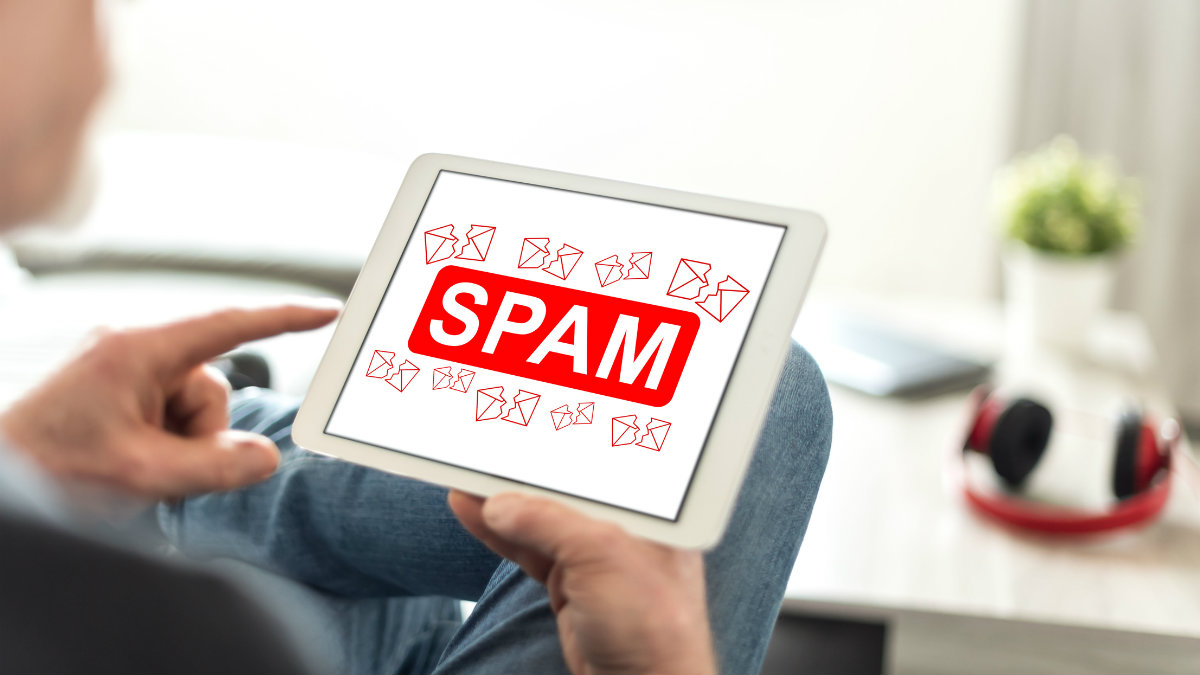
Email Whitelisting: How to make sure important email isn’t marked as spam in Gmail, Apple Mail, Yahoo, AOL
By SleekMart
The perks of email messaging made modern-day communications instantaneous and easy to deploy. But these same conveniences also make Email whitelisting important as it is a trivial matter for spammers to duplicate and massively send out millions of junk email in seconds.
Sure, spam filters can save you from the scams, phishing attempts and advertisements you don’t care about, but sometimes, email programs also return false positives and they can filter out important emails you can’t afford to miss.
How many times have you heard “Have you checked your spam folder?” when confronted with an unread email? Probably too many times. To save yourself from embarrassing situations and never miss an important email again, make sure that all your significant email contacts are “whitelisted.”
Read on and learn what whitelisting contacts is all about, and become a pro on whitelisting certain email addresses – so you never miss latest newsletters and important security alerts.
Email ‘Whitelisting’
Email Whitelisting is the opposite of blacklisting; when you blacklist an email address, you are saying you never want to get messages from them, no matter what.
On the flip side, when you whitelist an email address, you are telling your email program that any message from the particular contact is always safe and exempted from your spam filter.
You may also want to whitelist companies, organizations and publications you trust so you won’t miss their correspondence and important alerts.
Email Whitelisting: Gmail
Gmail is one of the most popular email services out there right now, in part for its simplicity. You’ll find that adding an email address to your Gmail whitelist demonstrates that amazing simplicity.
- To begin, find a message from the contact you’re seeking to whitelist and click on it.
- On the right, next to the left-pointing arrow icon for “Reply,” you’ll find an icon that’s three dots stacked on top of each other. Click on the dots icon.
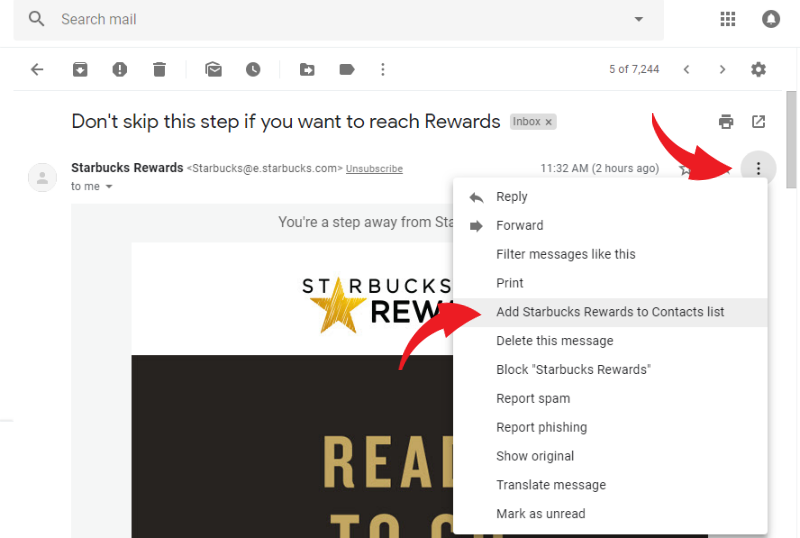
3. In the dropdown menu that you get from that click, you’ll find a few options of what to do with the contact, including blocking them (which would blacklist them in your email) and reporting them as spam.
5. That’s it, you’re done! That contact is now whitelisted, unless you remove them from your contacts.
What if you don’t already have a message in your inbox from someone you want to whitelist?
Just go to Google Contacts while logged into your email, and click “Create Contact” in the upper left corner. Add the email you wish to whitelist, and that email will always appear in your inbox now, and never in your spam.
Email Whitelisting: Apple Mail
Apple Mail also has a built-in junk filter that you can use to filter unwanted messages. Although it’s not as robust as the junk filters from other email clients, it’s still powerful and accurate without being overly aggressive.
Here are the steps to whitelist a sender on Apple Mail:
- With the Apple Mail program open, click on Mail > Preferences of the left side of your Mac’s menu bar (right beside the Apple logo).
- Click on the Junk Mail tab.
- On “The following types of messages are exempt from junk mail filtering” section, make sure that “Sender of message is in my Contacts” is checked.
- To widen your whitelist scope, check “Sender of message is in my Previous Recipients” too.
- Done? You can now close out the Preferences window. All emails from anyone in your Contacts will now be whitelisted.
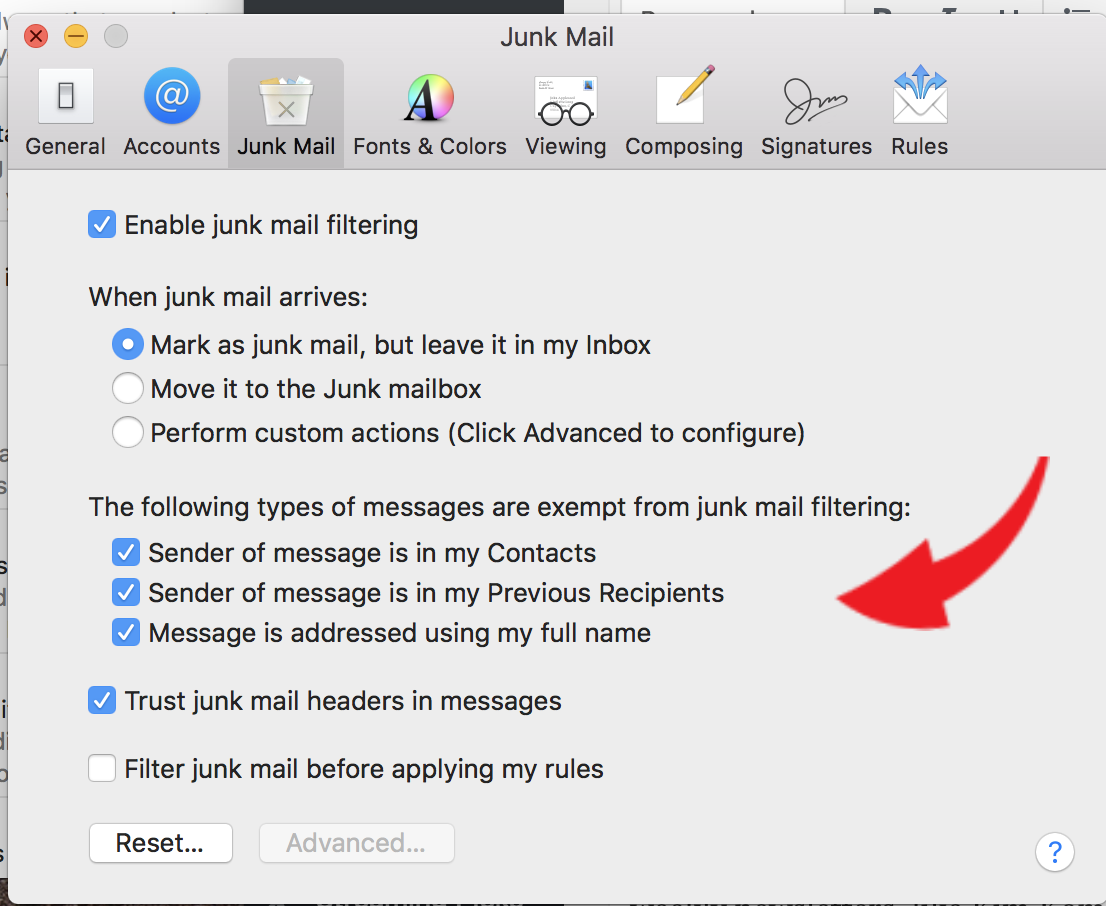
How to add an email sender to your Apple contacts
Once you have these options enabled on your Apple Mail preferences, you can now add any sender to your Contacts to essentially whitelist them. Here’s how you do it:
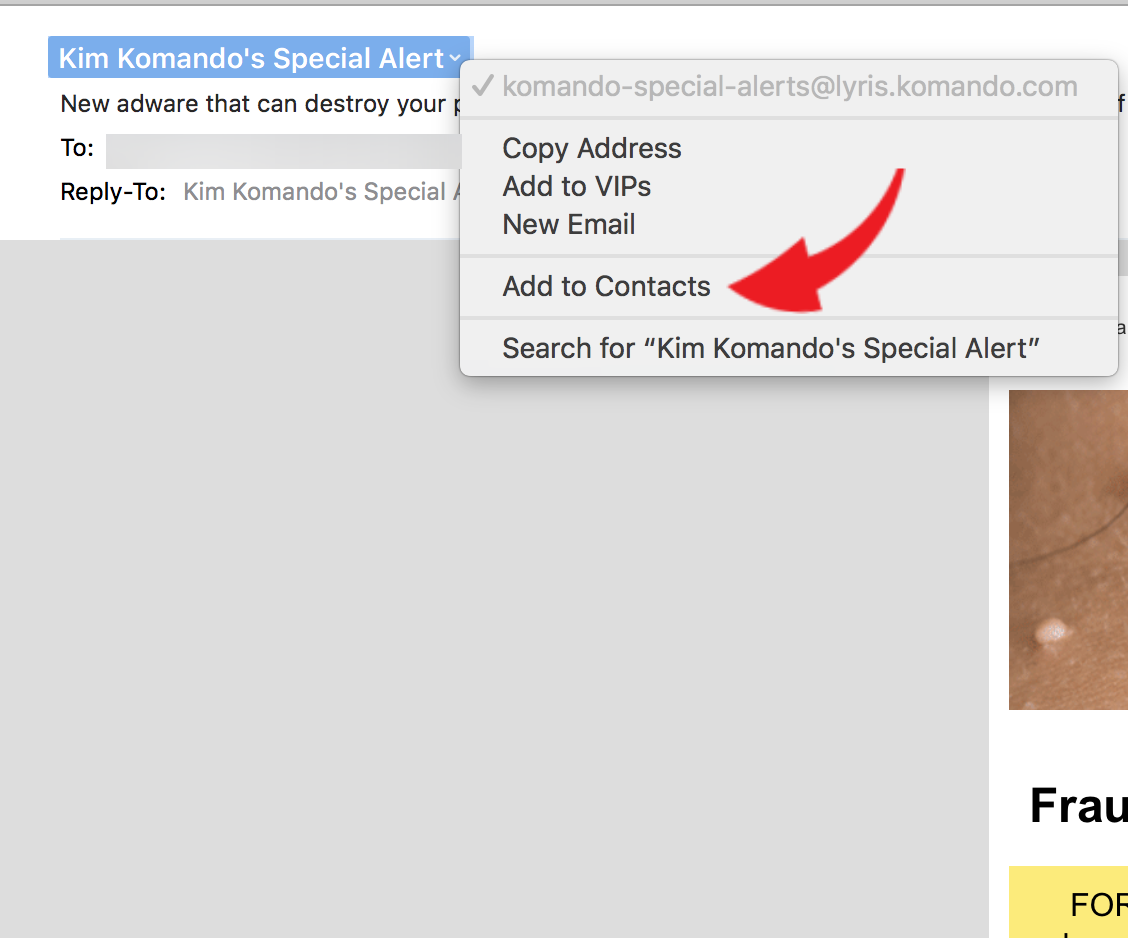
- Open an email from the sender in Apple Mail.
- On the top of the email, highlight the sender’s name or email address with your mouse then click the upside-down arrow at its end.
- Select “Add to Contacts.”
- Fill in any additional details you want to add to the sender’s Contact Card then hit “Done.”
Email Whitelisting: Yahoo
Whitelisting email addresses will take a little more effort in Yahoo than it does in Gmail, but one of the methods is the same — you can add that email address to your contacts.
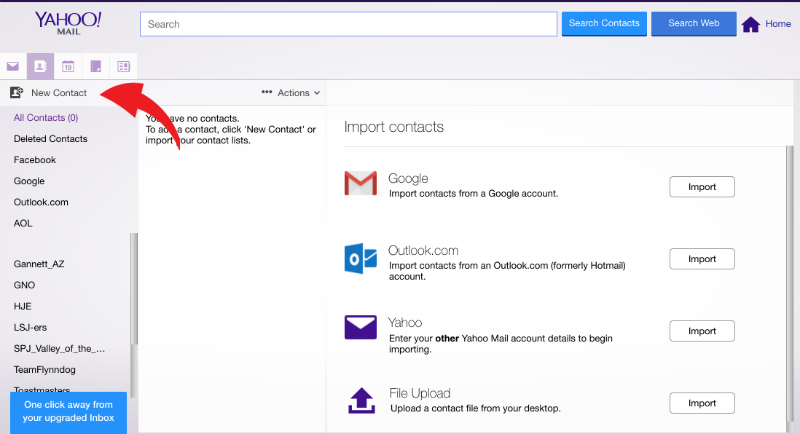
- Get to your Yahoo contacts by clicking the “Contacts” tab while you’re in the old view of Yahoo, or by clicking the square icon of a person’s bust beside three lines on the far right of the new view of Yahoo Mail. This icon is below your name in the top right, and beside the Yahoo calendar icon.
- In your now open contacts list, click “New Contact” at the top left, and add the email address you want to be whitelisted. Those emails are now guaranteed to end up in your inbox.
Yahoo Filters
Another method of email whitelisting within Yahoo is creating a filter.
- Click the “Settings” icon, which looks like a gear cog, on the far right of your Yahoo Mail window.
- Click “More Settings,” if you’re in the new Yahoo Mail view, or “Settings” if you’re in the old view, in the dropdown menu that appears. Click “Filters,” then “Add,” and enter a filter name—whatever you want to call it is just fine.
- Now put in the email address you’re looking to whitelist in the “To/CC” or “Recipient” section, and make sure the menu next to the “Then move the message to this folder” text is set to “Inbox.”
- Click save, then click save again. That filter will now make sure messages from that email address will always be in your Inbox.
Yahoo Bulk Folder
- Click on the email, or click the box next to the message to activate the checkmark.
- Click the “Not Spam” button that appears at the top of your Inbox. That will put this message, and all other messages from the email address that sent it, in your Inbox. Yahoo will no longer see this contact as spam, effectively, if not directly, whitelisting it.
Outlook or Windows Mail
Microsoft Outlook is a handy email service that you can access through an application, or online. It’s very popular in offices, where whitelisting clients and executives is incredibly important. Luckily, Outlook keeps this simple with a “Safe Senders” list.
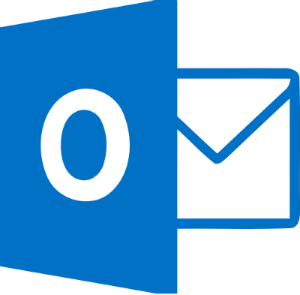
- To get to the “Safe Senders” list, go to the Tools menu in Outlook, and click “Options.” There will be a few tabs — we want “Preferences,” then “Junk E-mail.” Junk E-mail will also give you several tabs, and the one you want is “Safe Senders.”
- To add a contact to your Safe Senders list, and therefore whitelist them within Outlook, click “Add,” then input the email address you’re whitelisting in the “Add address” section.
- Click “OK,” and you’re done. Outlook will now see messages from this address as inbox-worthy, and you’ll never lose important correspondence.
AOL
Though not as popular with new users, AOL still has an active group using its email services that also whitelists email addresses that they really want to see messages from.

Much like with the email services above, the best way to whitelist an email in AOL is to add it to your contacts.
- Click the “Contacts” link in AOL Mail, or open your AOL Address Book.
- Select “New,” and set the email you want to whitelist as “Email 1” in the contact sheet.
- Click “Create,” and you’re all set!
Add contact option
Like with Yahoo, if you find an email you actually want to receive in your spam folder, go ahead and click on it, or highlight it by checking the box next to it, and select the “Not Spam” option that appears at the top.
AOL Whitelist
Also, to keep your AOL address book simpler, you can whitelist by manually managing your spam settings.
- Click on “Spam Controls” in the lower right side of your inbox, and in the “Mail & Spam Controls” window that appears, click “Custom sender list,” and select “Allow email from.”
- Input the email address you want to whitelist
- Click “Save.” With some reverse blacklisting, you whitelist a contact!
